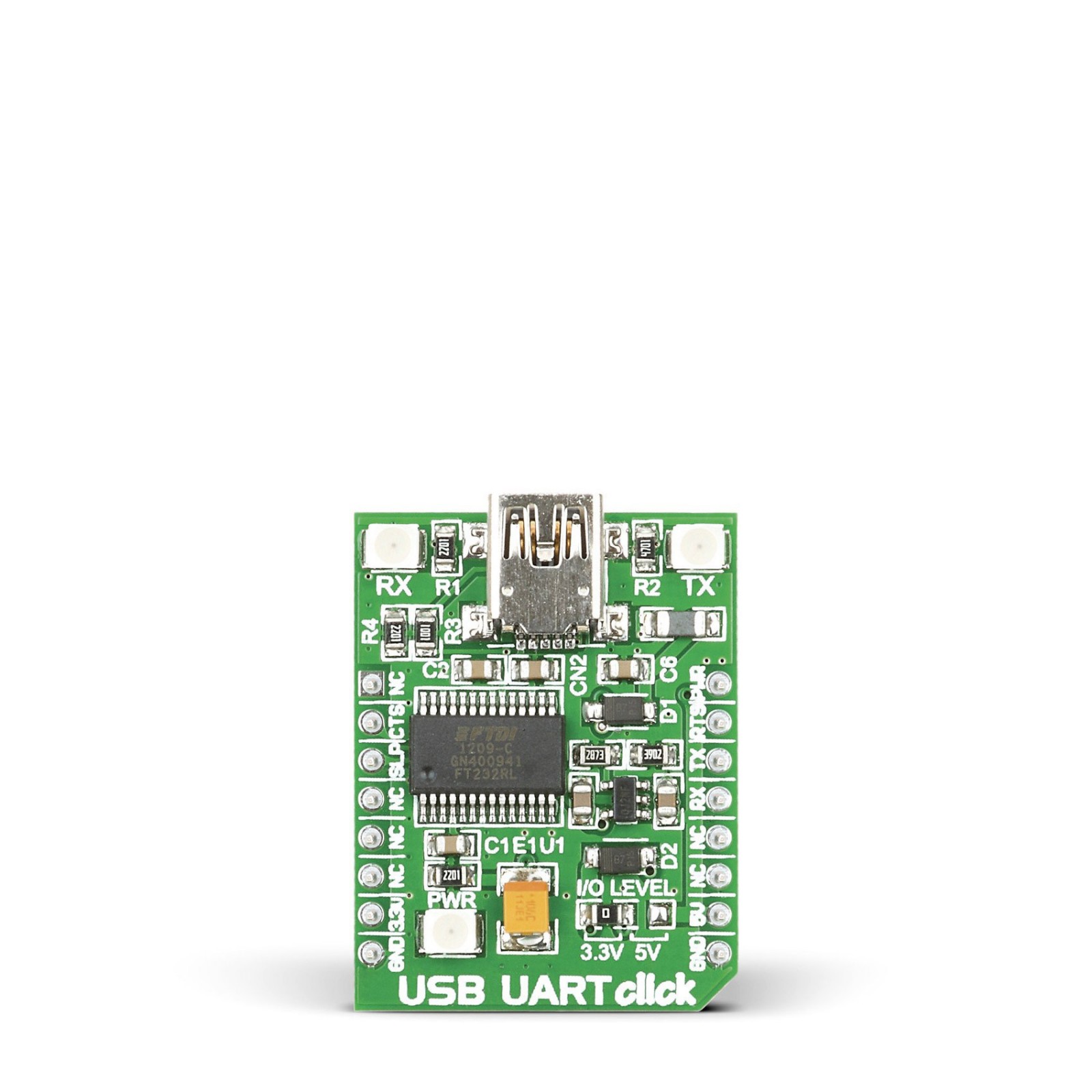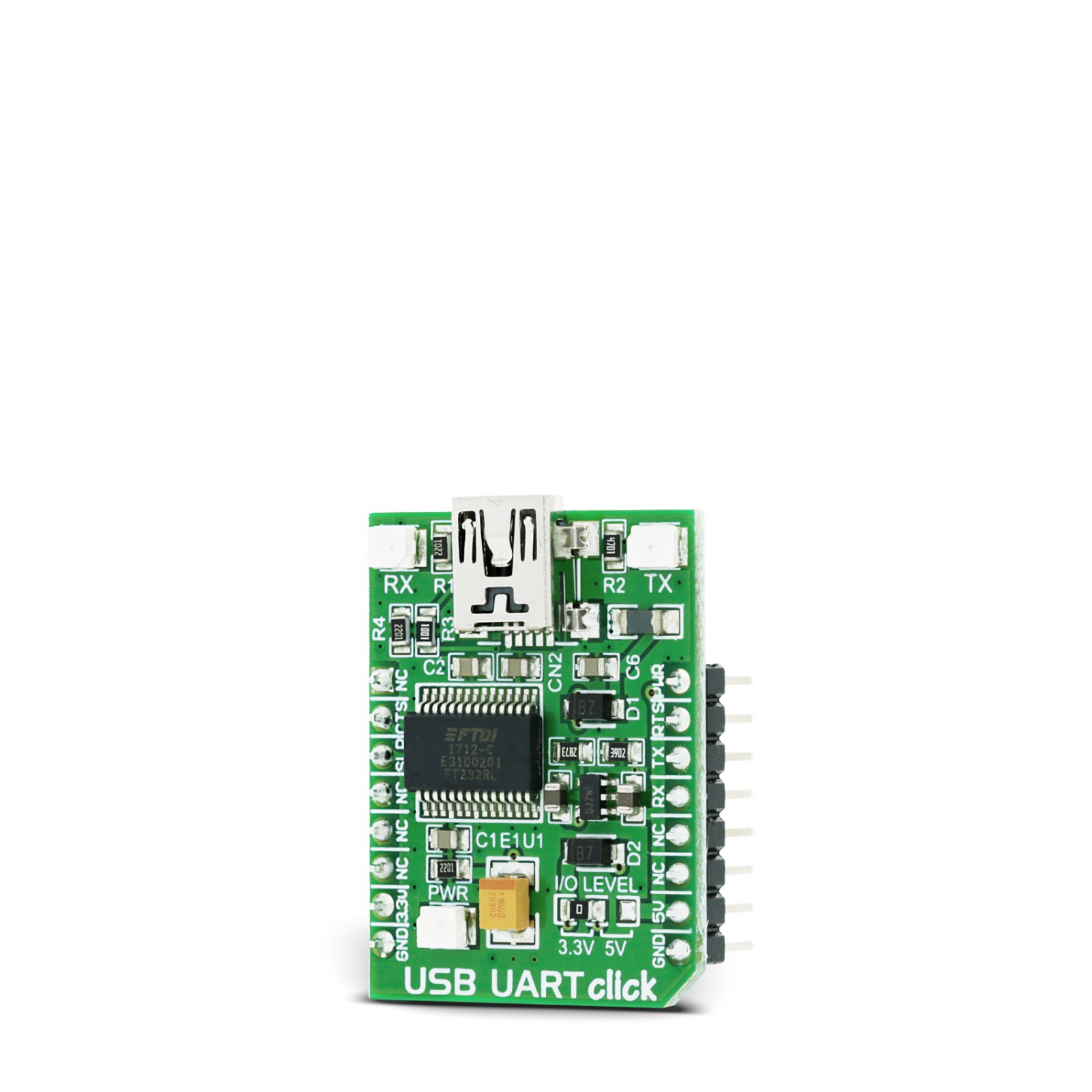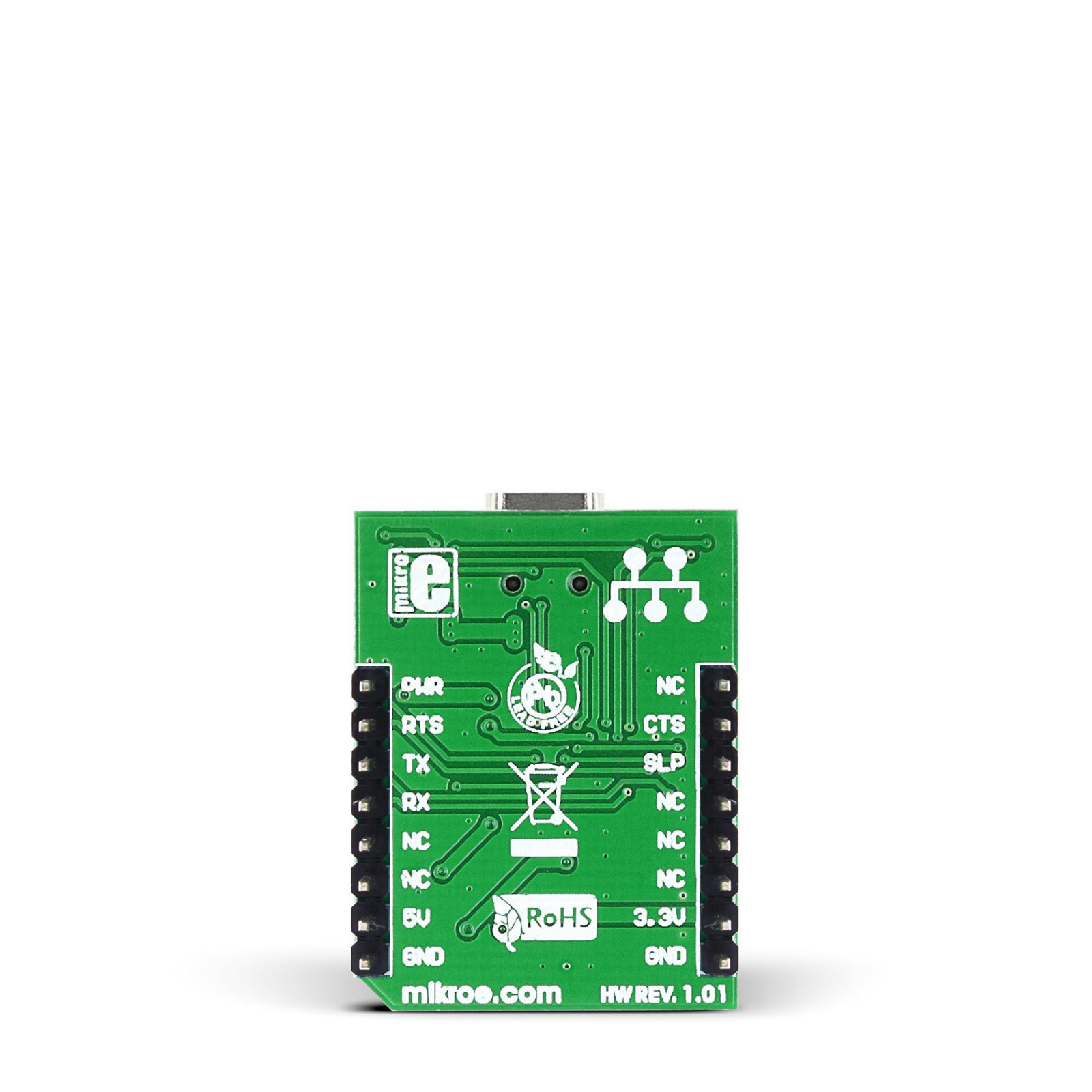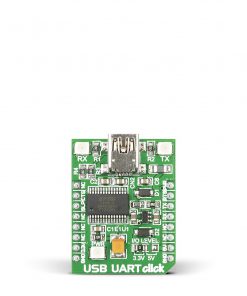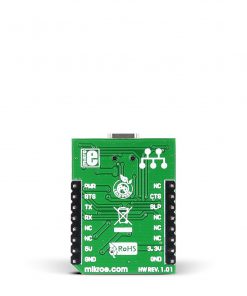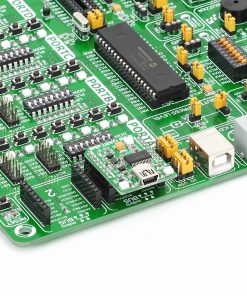USB UART Click
R480.00 ex. VAT
USB UART Click is a compact add-on board with a general-purpose USB to UART serial interface. This board features the FT232RL, a USB to serial UART bridge from FTDI. It offers a USB 2.0 to asynchronous serial data (UART) interface, allowing the microcontroller-based designs to communicate with the personal computer in a very simple way. It has integrated EEPROM, USB termination resistors, clock generation, AVCC filtering, POR, and LDO regulator. This Click board™ makes the perfect solution for the development of various applications that use a UART communication protocol, PC applications, RS232 communication with modems, and more.
USB UART Click is supported by a mikroSDK compliant library, which includes functions that simplify software development. This Click board™ comes as a fully tested product, ready to be used on a system equipped with the mikroBUS™ socket.
Stock: Lead-time applicable.
| 5+ | R456.00 |
| 10+ | R432.00 |
| 15+ | R408.00 |
| 20+ | R392.64 |

